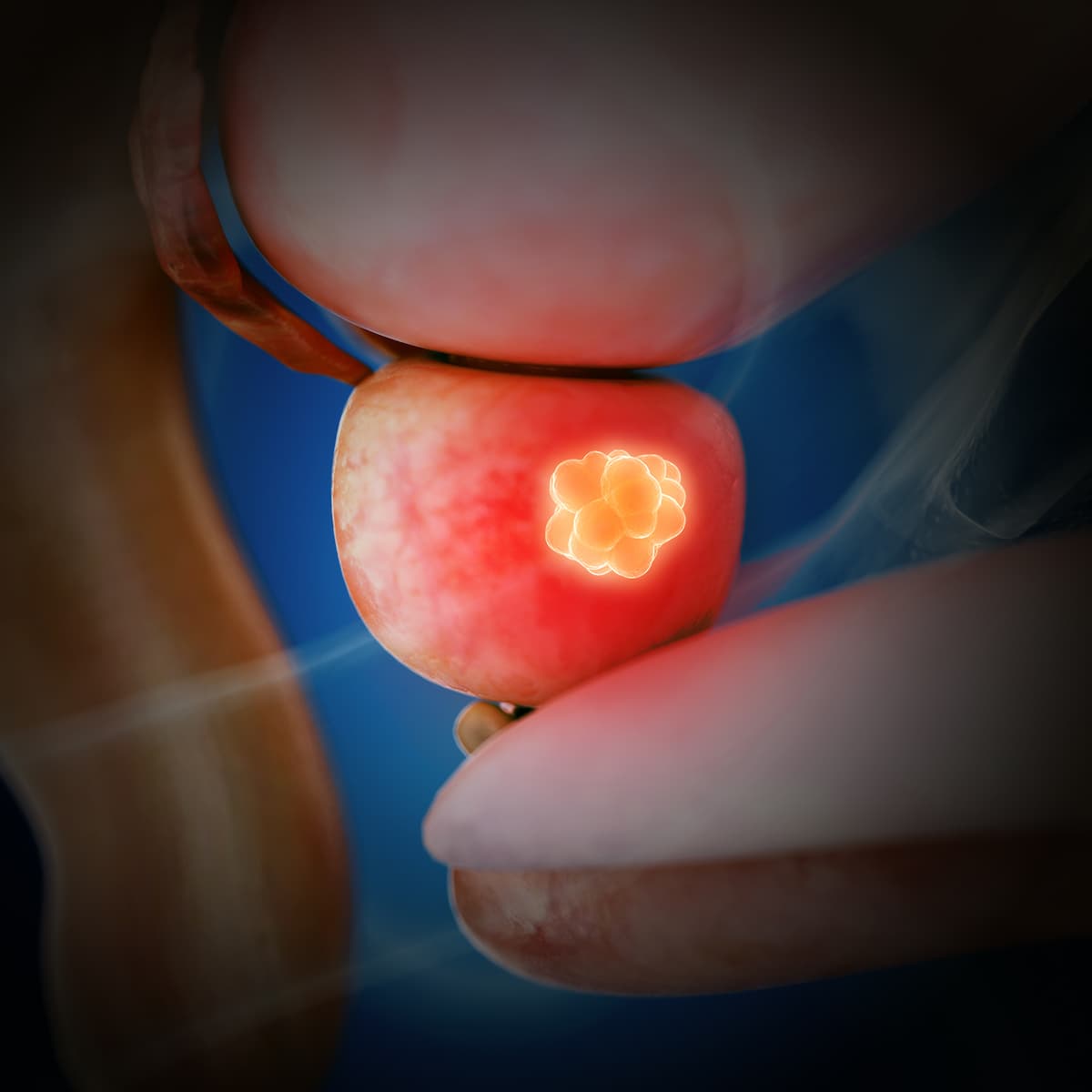Novel PROTAC Androgen Receptor Elicits Clinical Activity in Metastatic CRPC
Phase 1/2 data support further development of ARV-766 in advanced prostate cancer, says Daniel P. Petrylak, MD.
ARV-766 monotherapy was well tolerated; ARV-766 showed promising clinical activity in patients with tumors harboring AR ligand binding domain mutations, and based on these findings, ARV-766 warrants further development in advanced prostate cancer,” according to Daniel P. Petrylak, MD.

Tolerability and clinical activity were observed when pretreated patients with metastatic castration-resistant prostate cancer (mCRPC) received treatment with the investigational proteolysis targeting chimera (PROTAC) androgen receptor (AR) ARV-766, according to data from a phase 1/2 trial (NCT05067140) presented at the 2024 American Society of Clinical Oncology (ASCO) Annual Meeting.
The initial results demonstrated that 9 (7%) of 123 patients treated in phases 1 and 2 had treatment-emergent adverse events (TEAEs) leading to dose reduction and 10 (8%) had TEAEs leading to discontinuation of ARV-766. In 47 patients who were evaluable for prostate-specific antigen (PSA) and had AR ligand binding domain (LBD) mutations, 43% showed a best PSA decline of at least 50%.
“ARV-766 monotherapy was well tolerated; ARV-766 showed promising clinical activity in patients with tumors harboring AR ligand binding domain mutations, and based on these findings, ARV-766 warrants further development in advanced prostate cancer,” Daniel P. Petrylak, MD, professor of medicine and urology at Yale School of Medicine and chief of genitourinary oncology at the Smilow Cancer Hospital in New Haven, Connecticut, said in his presentation.
ARV-766 is a novel, potent, orally administered proteolysis targeting chimera AR degrader that targets both the wild-type AR gene and mutations including AR L702H, H875Y, and T878A which are associated with poor prognosis in mCRPC. According to Petrylak, between 20% and 25% of men with mCRPC will develop mutations in the AR LBD (amino acids 671-920), with these 3 being the most common. Overcoming resistance to current treatments, such as androgen receptor pathway inhibitors (ARPIs), is an important area of research in this setting as patients experience disease progression.
The phase 1 dose escalation portion of the trial enrolled 34 patients to receive from 20 mg to 500 mg ARV-766 orally once daily. Patients must have experienced disease progression following at least 2 prior systemic therapies including 1 ARPI and be actively undergoing androgen deprivation therapy. The primary end points were the incidence of dose-limiting toxicities, adverse events, and laboratory abnormalities. No dose-limiting toxicities were observed, and a maximum tolerated dose was not reached.
Pharmacokinetics of ARV-766 monotherapy indicated there were dose-dependent increases in ARV-766 exposure up to 320 mg daily in the phase 1 portion, with exposure accumulating from approximately 5- to 8-fold at steady state. The mean area under the curve from 0 to 24 hours at steady state at the 100 mg and 300 mg doses exceeded the minimal preclinical efficacious thresholds, leading these to be selected as the recommended phase 2 doses.
The phase 2 portion randomly assigned patients on a 1:1 basis to receive either 100 mg daily or 300 mg daily ARV-766 orally.Patients must have received between 1 and 3 prior ARPIs and 2 or fewer prior chemotherapy regimens. The primary end point was to evaluate the antitumor activity of ARV-766.
At a data cutoff of April 15, 2024, 123 patients were evaluable for safety across the phase 1 and phase 2 portions, 53 of whom had AR LBD mutations. The median age of the patient population was 72. In the overall population, 57% had an ECOG performance status (PS) of 0 and 43% had a PS of 1, whereas in the AR LBD population, 45% had an ECOG PS of 0 and 55% had a PS of 1. In the overall population, patients had received a median of 4 prior therapies (range, 1-10); 46% had received at least 2 prior ARPIs, and in the AR LBD population, 55% had. Prior taxane had been used in 56% overall, with 39% receiving docetaxel alone, 1% receiving cabazitaxel (Jevtana) alone, and 16% receiving both.
When looking at the best improvement in PSA level from baseline for 47 patients with AR LBD mutations treated in phase 2, 51% had a decline of 30% or greater, and 43% had decline in PSA of 50% or greater. In 20 patients with AR LBD mutations whose soft tissue lesions were evaluable for tumor response, the objective response rate was 30%, but Petrylak said this was unconfirmed pending subsequent CT scans to show the response is stable.
Eighteen patients with AR LBD mutations are receiving ongoing treatment, and 2 patients had received ARV-766 for over 1 year before ending treatment.
Any-grade TEAEs were observed in 118 patients (96%), with 46 (37%) being grade 3 or higher, and 3 (2%) being fatal, which Petrylak said were deemed unrelated to the drug. The treatment-related AEs of any grade that occurred in at least 10% of patients were fatigue in 33%, nausea in 20%, diarrhea in 15%, increased blood creatinine in 15%, alopecia in 14%, and decreased appetite in 11%. Grade 3 fatigue occurred in 3 patients (2%), nausea in 1 (1%), and diarrhea in 1 (1%). Petrylak said that it was predominantly fatigue that led to drug discontinuation. There were no grade 4 treatment-related AEs.
When asked by a moderator about outcomes with wild-type AR, Petrylak said that the data for patients with wild-type AR are still being analyzed. “In the laboratory, [ARV-766] will degrade both LBD mutations and native ARs. Certainly, one could see a role in that situation,” he said.
Reference
Petrylak DP, McKean M, Lang JM, et al. ARV-766, a proteolysis targeting chimera (PROTAC) androgen receptor (AR) degrader, in metastatic castration-resistant prostate cancer (mCRPC): Initial results of a phase 1/2 study. J Clin Oncol. 2024;42(suppl_16):5011. doi:10.1200/JCO.2024.42.16_suppl.5011